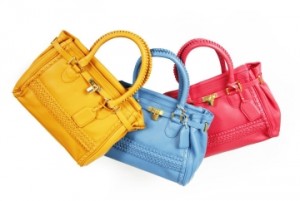Territory
Registration protects the design in the entire Italian territory (for a total of roughly 324,000 square kilometers and about 60 million inhabitants) and in the State of San Marino, and may be recognized  in the Vatican City.
in the Vatican City.
Registrability Requirements
Designs must be new and have individual character, meaning that the overall impression produced by the design on the informed user must differ from the overall impression produced by any design previously made available to the public.
Registrable Designs
Bi- and tri-dimensional industrial and handicraft items and their visible parts, packaging, get-up, graphic symbols, typographic typefaces, web browser screens and computer icons fulfilling the requirements of novelty and individual character are registrable designs.
The range of registrable products is actually quite vast, including figurative designs to be applied on products as a decoration or characterization. The weft of a fabric, an unusual visible stitching, the shape of a pocket or of other parts of articles of clothing or designs that can be applied thereto are registrable, as are marks consisting of graphic elements which are not registrable as trademarks or are used only temporarily, etc.
Components of complex products are registrable only if they remain visible during normal use by the consumer and if the visible features of the component fulfil the requirements as to novelty and individual character.
No design rights subsist in designs dictated by their technical function, or in features of a product which must be reproduced necessarily in their exact form and dimensions in order to connect the product to another product so that either product may perform its function.
Priority
It is possible to claim the priority of an earlier first design filed in a member country of the Paris Convention within 6 months of that first design’s filing date. If, however, it is a first filing, the design application can be the basis for a priority claim when applications for the same object are filed in other countries party to the Paris Convention.
Who May Apply for an Italian Design Registration
Any natural or legal person of Italian or foreign nationality (the author of the design or his assignee) may apply for an Italian design.
Design Attorneys
Applicants may only be represented professionally by qualified attorneys holding membership in the Italian Industrial Property Consultants Institute, or by attorneys-at-law.
Where to File the Application
Design applications may be filed in Italy, with the Chambers of Commerce or with the Italian Patent and Trademark Office (IPTO).
Novelty – Disclosure
Novelty must, as a rule, be absolute: disclosure by third parties of the design before the filing date of the application for design registration or before the priority date can make the registration void. Disclosure of the design on the part of the author does not prejudice novelty providing that the application is filed within 12 months following such disclosure. Moreover, registrability of a design is not prejudiced by disclosures that are not reasonably available to specialised and interested circles during normal trade within the European Union.
Multiple Designs
With a single application for multiple designs it is possible to request protection for a group of designs as long as they belong to the same class of goods of the international classification of Locarno on designs.
Accessibility to Third Parties
The application is made immediately available to the public, unless upon filing the applicant requests that the application be made accessible to third parties only at a later date, which cannot be later than 30 months running from the filing or priority date.
Rights Conferred by the Application
After filing, or after the date on which the application was made accessible to third parties if subsequent to the filing, the applicant can prevent third parties from using the design, initiate court actions and request interlocutory injunctions.
Examination
The IPTO carries out an examination to verify the fulfilment of the formal requirements for registrability. It does not examine the novelty of the design.
Opposition
No opposition procedure currently exists.
Grant
The grant of design registrations takes place a few months after the filing of the application, but exclusive rights can be exercised as from the date on which the application is filed.
Duration and Renewals
Design registrations have a duration of 5 years following the filing date. Renewals are possible for successive 5-year periods for a maximum total duration of 25 years.
Maintenance Fees
Maintenance fees for Italian design registrations can be paid in at 5-year intervals starting from the first 5-year period running from the filing date.
Licensing, Assignment, Rights of Security
Licensing and assignment is permitted for designs, which may also be used as rights of security.
Unregistered Design Rights
Under European Community law, unregistered design rights, which afford a certain degree of protection even in the absence of registration, are acquired automatically and with no need for formalities. The unregistered design right is more limited in scope as well as duration (3 years) than the registered design right: the essential features of both forms of protection are compared in our table Registered/Unregistered Italian designs.
Term for Registration of Disclosed Designs
There is a term to be observed for the registration of disclosed designs: within 12 months from the design’s first disclosure, it is necessary either to seek registration (maximum term of protection 25 years) or else only unregistered design rights will be recognised (maximum term of protection 3 years).
Copyright Protection
Designs possessing creative character and artistic value are eligible for protection under Italian copyright law regardless of whether they are also protected by registered design rights.
Customs protection
An Italian design application or registration gives the owner the right to request customs protection, involving the detention of counterfeit products at customs.
Applicable International Agreements
The Paris Convention, The Hague Agreement on designs and the TRIPs Agreement (World Trade Organization members).
